Top 10 Fast Growing Vines and Climbing Flowers
Updated: Apr. 19, 2024
Color your garden with flowering vines. Add beauty and height with our recommendations for fast growing vines and climbing flowers.
Not only are fast growing vines and climbing flowers great to look at, they serve a definite purpose in backyards. Vining plants can add height and fullness to any flower garden with their sky-high antics. Take a look at these plant picks for ideas, then start adding flowering vines to your backyard.
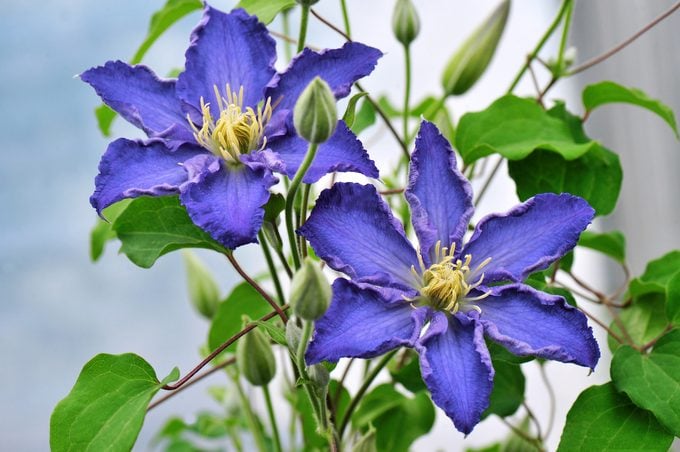
On This Page
Clematis
Clematis spp., Zones 3 to 9
This cold-hardy vine is available in a wide range of colors. Different clematises bloom anytime from spring to frost, attracting butterflies and hummingbirds. These vines need “warm heads and cool feet” in the form of full sun in moist, well-draining soil that has been mulched or underplanted with other perennials.
Why we love it: Equally attractive are the large, fluffy seed heads, which develop on some vines in fall and remain well into winter.
After you finish reading our list of fast growing vines and climbing flowers, discover the best vines to grow for hummingbirds.
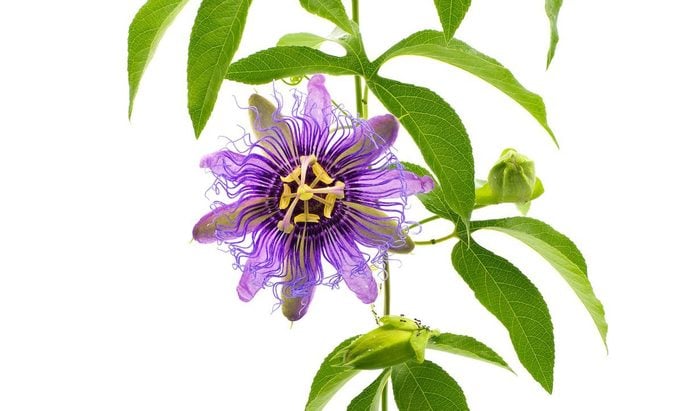
Purple Passionflower
Passiflora incarnata, Zones 5 to 9
Hummingbirds love the passionflower’s intricate blooms, while butterflies flock to the vine as it is a larval host plant. Gardeners in the northern portion of its hardiness zones may not see fully formed fruit on this plant. It’s a native perennial that’s drought tolerant and grows in full sun or part shade.
Why we love it: The intricate blossoms can be cut and placed in small vases.
For another drought-tolerant option, try heat-loving butterfly vine.
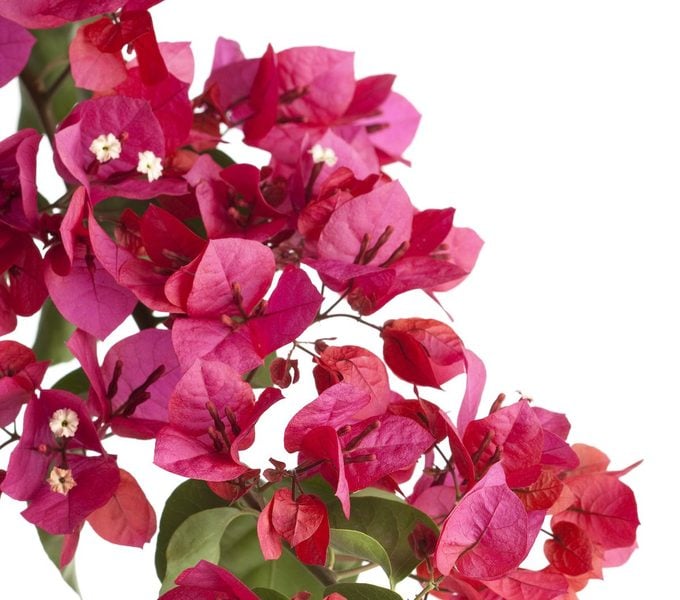
Bougainvillea
Bougainvillea spp., Zones 9 to 11, annual elsewhere
This flowering vine produces masses of neon-bright, papery thin “flowers,” which are actually colorful bracts. The true flowers are small and white, and are nestled within. This sun-loving, drought-tolerant plant needs acidic soil. In the South, bougainvillea can get quite large when trained up the side of a house.
Why we love it: Though popular as a vine, it also functions as a shrub or a container plant.
Add lilac vine to backyard flower gardens.
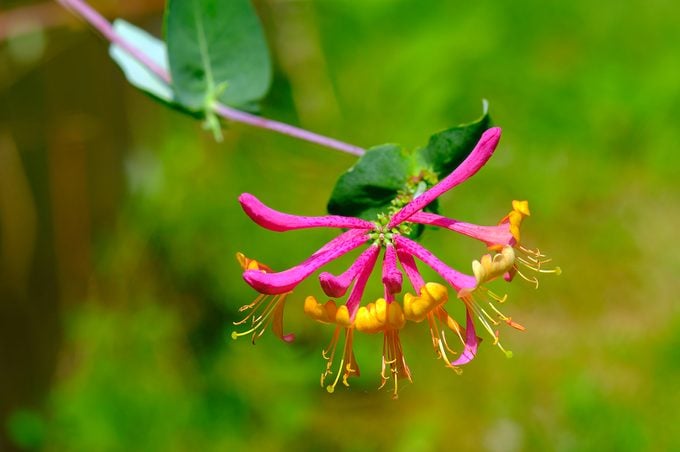
Coral Honeysuckle
Lonicera sempervirens, Zones 4 to 9
The native coral honeysuckle (not the invasive L. japonica) has long, tubular flowers that bloom in bunches, creating a fan effect. A favorite among hummingbirds, this vine is also a larval host plant for butterflies and moths.
Why we love it: The blooms last from spring into summer, then small, bird-friendly berries appear.
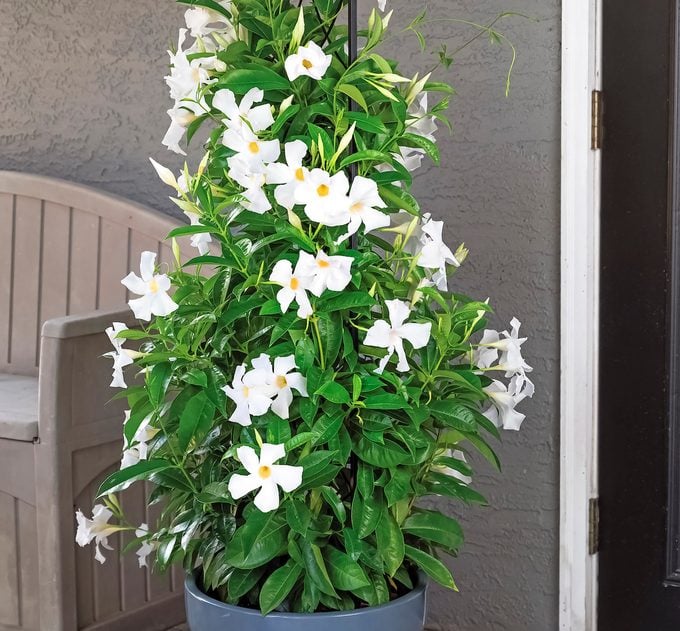
Mandevilla
Mandevilla spp., Zones 10 to 11, annual elsewhere
Nothing says tropical like mandevilla, which thrives in heat and humidity. Large trumpet-shaped flowers in pink, red, yellow, white, apricot, peach and lavender bloom all summer long. These woody vines are often sold as annuals but can overwinter inside.
Why we love it: Perfect for the poolside, container-friendly mandevilla can provide bold color anywhere.
Learn how to grow a climbing hydrangea vine.
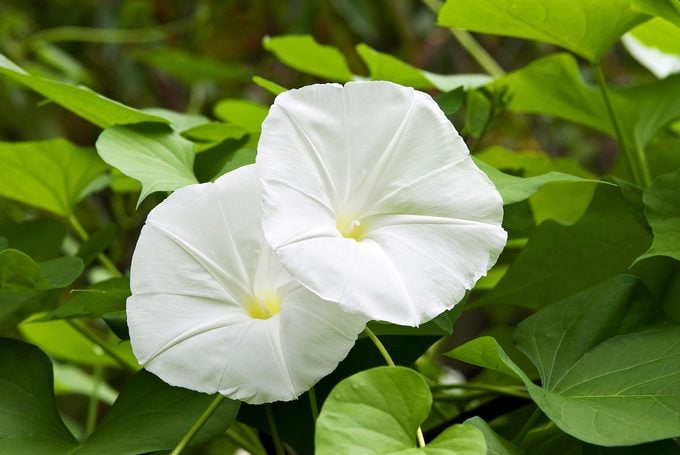
Moonflower
Ipomoea alba, Zones 10 to 12, annual elsewhere
Moonflower vines bloom fragrant white flowers at dusk for night-flying moths to pollinate. Each 5-inch-wide, flat flower is marked with a narrow five-pointed star. Preferring moist, well-draining soil and full sun, moonflowers bloom from summer to fall.
Why we love it: Kids and adults alike will love watching moonflowers open up later in the day.
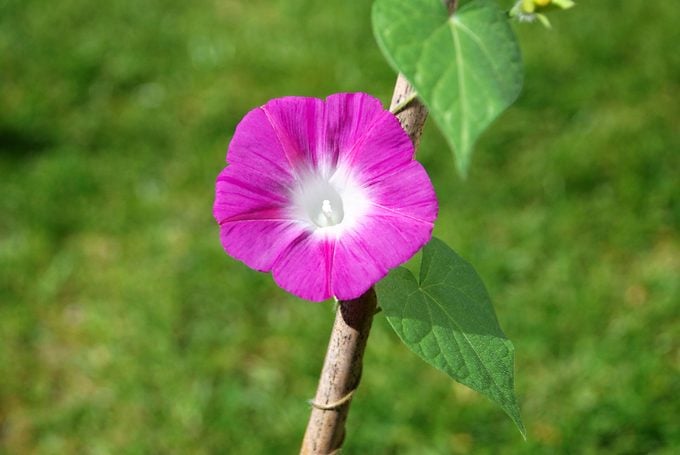
Morning Glory
Ipomoea spp., annual
Morning glory vines are available in floral colors of pink, white, blue or purple. Easy to grow from seed, the trumpet-shaped flowers open in the morning and close later in the day. Morning glories do reseed readily, so plant them with awareness of their spreading abilities.
Why we love it: Drape the lightweight vines over deck banisters, or train them up vertical structures such as obelisks.
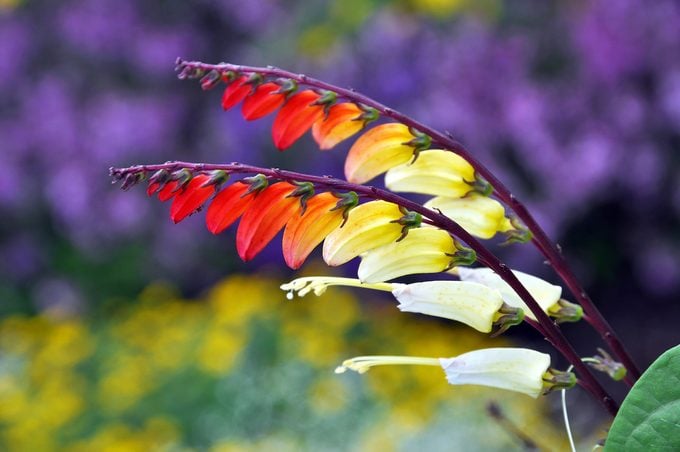
Firecracker Vine
Ipomoea lobata, Zones 9 to 11, annual elsewhere
Firecracker vine produces upright flower heads, attracting pollinators. Also commonly called Spanish flag, each branch consists of at least a dozen blossoms in a descending cascade of colors.
Why we love it: These fast growing vines grow prolifically in early summer, and the flowers bloom in late summer.
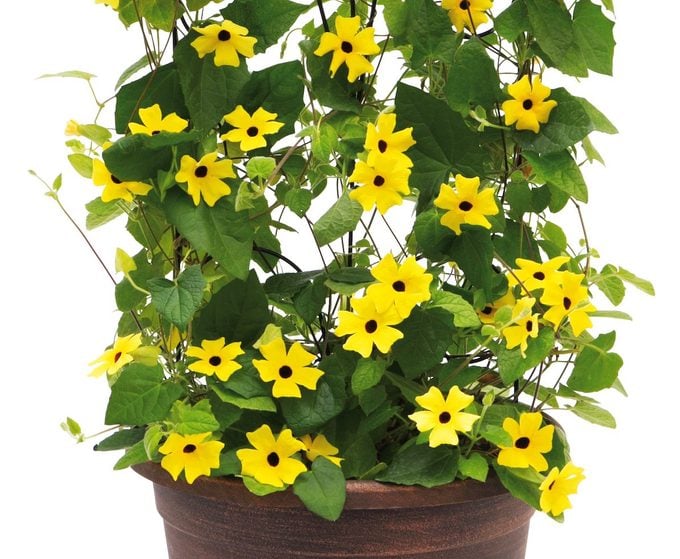
Black-Eyed Susan Vine
Thunbergia alata, Zones 10 to 11, annual elsewhere
Watch for hummingbirds, bees and butterflies to visit the 2-inch-wide blooms on a black-eyed Susan vine. Simple but dramatic, this vine also pops in hanging baskets.
Why we love it: Recent breeding has produced captivating colors including red, orange-red and all white.
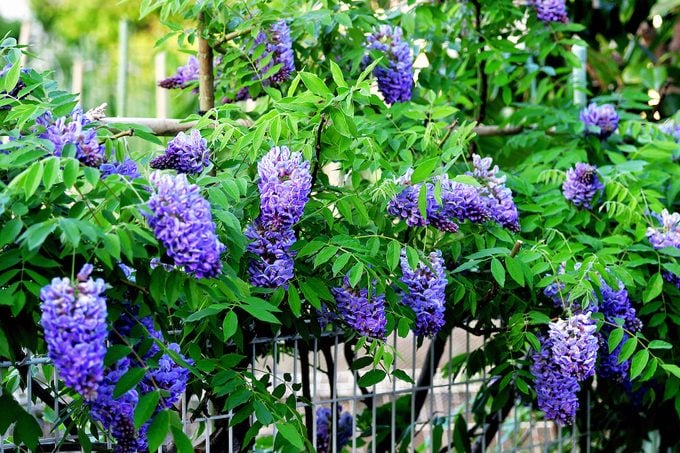
American Wisteria
Wisteria frutescens, Zones 5 to 9
This native blooms in late spring—the sweetly scented lavender blossoms attract butterflies, while the vine serves as a larval host plant for several skipper butterflies. Be sure to give this woody vine strong support and full sun.
Why we love it: For the best effect, grow this classic in an open structure, allowing the blooms to hang freely.
Invasive Vines You Should Never Grow
Not all fast growing vines are good for your garden. Avoid these plants known to cause issues:
- Chinese wisteria (Wisteria sinensis)
- English ivy (Hedera helix)
- Japanese honeysuckle (Lonicera japonica)
- Japanese wisteria (Wisteria floribunda)
- Kudzu (Pueraria montana)
- Old man’s beard (Clematis vitalba)
Next, find out if trumpet vine is invasive.
Sources
- Missouri Botanical Garden – purple passionflower
- University of Florida Extension – passionflower
- Loudoun Wildlife Conservancy – native vines for wildlife
- North Carolina Wildlife Federation – native pollinator vines
- North Carolina Cooperative Extension – coral honeysuckle
- National Audubon Society – 10 plants for a bird-friendly yard
- Virginia Native Plant Society – coral honeysuckle
- North Carolina State Cooperative Extension – American wisteria
- Virginia Native Plant Society – American wisteria
- Oregon State University Extension Service – morning glory
- Iowa State University Extension and Outreach – annual flowering vines
- University of Arkansas Division of Agriculture Research & Extension – moonflower
- Missouri Botanical Garden – moonflower
- University of Wisconsin-Madison Division of Extension – black-eyed Susan vine
- University of Arkansas Division of Agriculture Research & Extension – black-eyed Susan vine
- Clemson Cooperative Extension – clematis
- University of Nebraska-Lincoln Extension – clematis
- Michigan State University – an introduction to clematis
- Clemson Cooperative Extension – mandevilla
- University of Florida Extension – mandevilla
- North Carolina State Cooperative Extension – bouganvillea
- UC Master Gardeners of Napa County – bouganvillea
- North Carolina State Cooperative Extension – firecracker vine
- Missouri Botanical Garden – firecracker vine
- University of Arkansas Division of Agriculture Research & Extension – Spanish flag
Why Trust Us?
For nearly 30 years, Birds & Blooms, a Trusted Media Brand, has been inspiring readers to have a lifelong love of birding, gardening and nature. We are the #1 bird and garden magazine in North America and a trusted online resource for over 15 million outdoor enthusiasts annually. Our library of thousands of informative articles and how-tos has been written by trusted journalists and fact-checked by bird and garden experts for accuracy. In addition to our staff of experienced gardeners and bird-watchers, we hire individuals who have years of education and hands-on experience with birding, bird feeding, gardening, butterflies, bugs and more. Learn more about Birds & Blooms, our field editor program, and our submission guidelines.


